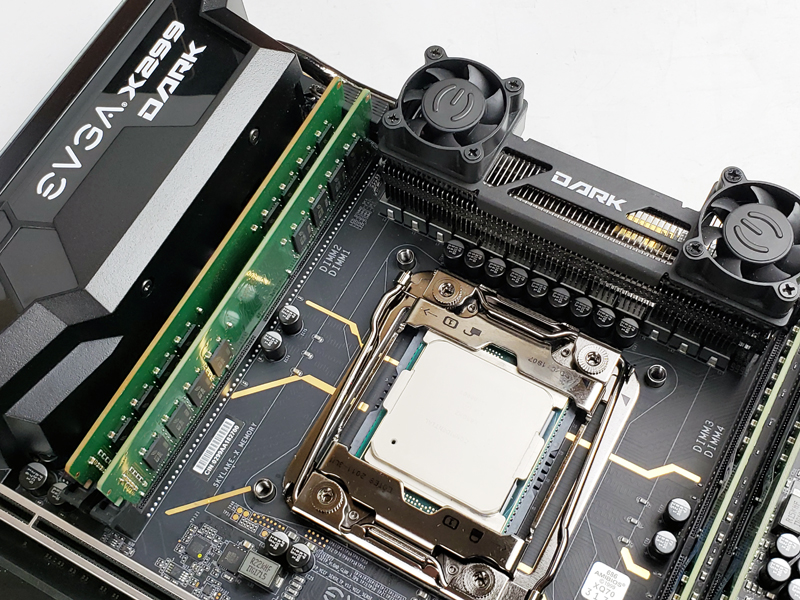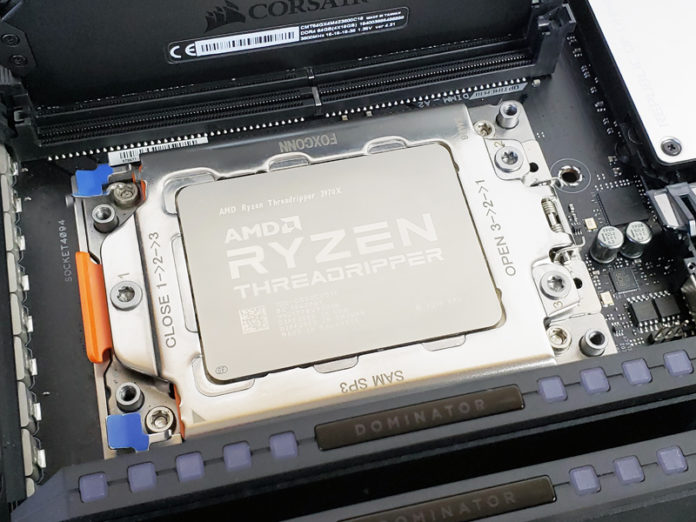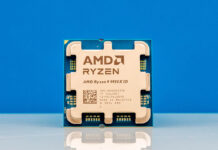Today we released reviews of high-end desktop (HEDT) / workstation processors from Intel and AMD. Unlike most processor releases, I did not do the reviews. Instead, William and John did the work to get these reviews ready for launch time. Working together, they created something better than we could have done previously. I wanted to take a moment to give recognition and provide some context in addition to our reviews.
Recognition for Executing an Ambitious Plan
When we received the ask from both Intel and AMD to review their newest HEDT workstation parts, I was nervous. Normally I work on STH’s new CPU reviews, but I was in Taiwan, Utah, then Austin for Dell Tech World, followed by Denver for Supercomputing. That is just in the past four weeks.
In the face of that, William and John supported the idea that they would each take a review, but also contribute to each. William ran his Windows suite and took the Intel Core i9-10980XE review while John would run Linux tests and write our Threadripper 3970X review. We have numbers for the Threadripper 3960X in both reviews as well. Through some cross shipping and teamwork, everything came together. The team was able to create reviews spanning both Windows and Linux. With the AMD Ryzen Threadripper 2990WX, users saw a delta due to the Windows scheduler so we wanted to address that instead of just looking at the Linux side.
I just wanted to say thank you to both William and John for making this ambitious review set happen while I was on the road.
Putting Some Context Around the Core i9-10980XE and Threadripper 3970X Reviews
For a few weeks, we were expecting the two reviews to go live at 6AM Pacific on the 25th of November 2019. A few days before, we received a note that the Core i9-10980XE embargo was changed to 12:01AM.
At that point, William and John had almost finished their reviews so I made the call to go-live at 6AM. The disadvantage is that our Core i9-10980XE review went live six hours later than it would have which means we would lose traffic. Still, from an editorial perspective if we went live at 12:01AM our review could not have included Threadripper 3960X and 3970X numbers that would still be under embargo. It seemed strange to release a review excluding figures that were scheduled in our publishing queue for only a few hours later.
It was my call, and I held our Intel Core i9-10980XE review to be able to provide our readers with more context.

On one hand, one can argue that the Core i9-10980XE is a lower-cost part, so it is not competitive with the new Threadripper series. On the other, we wanted to give our readers the ability to come to that conclusion themselves with data.
Analysis of Our Q4 2019 HEDT Processor Reviews
There is a fine point that came through in our reviews today that I wanted to address, and that is the market. One of the points that came through in William’s and John’s reviews is that the Ryzen 3950X is likely a lower-end part. Taking a look at some of the 16-32 core competition, one can see that this part has the lowest core count and the lowest cost. It also is missing the platform features that other chips in this class have. That is perfectly fine as it is a mainstream CPU and it is the least expensive. Comparing the Ryzen 3950X to the Xeon W-3245 is fascinating.

In all of these charts, we have another line with PCIe Gen but we decided to go with the number of lanes, then the effective Gen3 bandwidth multiplying lanes by 2 for Gen4 lanes. We are still early in the Gen4 product cycle which means there are still more Gen3 devices out there. In the case of the Ryzen 3950X, despite having similar PCIe bandwidth as the Core i9-10980XE, using a PCIe Gen3 x16 GPU and x16 NIC (e.g. a 100GbE adapter) is not possible. With more lanes, the HEDT parts can handle that scenario.
As some background here, I personally have been on the journey from the dual Intel Xeon workstations (from Nahelem to Broadwell.) A reason I cannot use a mainstream part is the relatively small maximum memory size (64GB with full speed memory) as well as the lack of PCIe lanes. 1GbE and 10GbE are great, but even my home network has been on 40GbE/ 25GbE since 2015 just to get to network storage. That means I need more PCIe lanes for networking, local NVMe, and a GPU. The mainstream platforms simply fall short of servicing this use case. That is where HEDT parts, like the Core i9-10980XE and Threadripper parts, show an enormous benefit.
If we narrow down the set a bit, excluding the EPYC parts with lower clock speeds and lower power consumption while also removing some of the higher-cost Xeon W parts, we get to this view. Intel is optimizing their parts on memory capacity, and some of their advanced features such as AVX-512 and DL Boost.

Switching this to sort by price, we get a really interesting view. First off, Intel needs to adjust the Xeon W-3245 price since it absolutely needs a price adjustment given the new Xeon W-2295.

When we again truncate results, one can see the appeal of the Intel Xeon W-3275, albeit at a higher price. If the features like AVX-512 and large ECC memory capacities are going to be used, then Intel has a strong value proposition. Conversely, if one does not need those features, then the new Threadripper parts offer a strong value. At only $979, when we look in this view the Core i9-10980XE looks like a part appropriately priced between the Ryzen 3950X and the Threadripper 3960X, so long as the platform features are important.

I think many reviews will focus on pure CPU performance. Those reviews will miss the platform-level features that are important in the HEDT space. If these are being sold to former dual Intel Xeon customers, like me, they are important. I firmly believe that if Threadripper chips supported ECC RDIMMs, even without LRDIMM support for higher capacities, it would have put immense pressure on the Intel Xeon line. Hitting DDR4-3200 at 256GB in single-channel mode or 512GB in dual channel mode using inexpensive 64GB RDIMMs would have opened up a new market.
If you do not plan to utilize DL Boost or AVX-512, the picture changes a bit. Here is what that view looks like:

That view puts a lot of pressure on the Intel Xeon W-2295 as well as the Core i9-10980XE. AVX-512 is a great feature, but years after its introduction it still does not help in every situation. DL Boost is perhaps more interesting as Intel is investing so heavily in the feature it is likely to pay dividends 12-24 months from now. Software developers are set to have a large installed base with which to build AI inferencing applications upon without hitting a GPU. While the technology is still in its early days, this is something that has a visible path to and important impact on user experience.
Another way to view it is that if you are on a 12-24 month refresh cycle, you may reasonably look at your workloads and decide that the AVX-512/ VNNI benefit will be more impactful on the next refresh. That is a completely valid way to approach your evaluation as well.
Still, the key message if you simply need many fast and inexpensive cores along with PCIe bandwidth, the AMD Ryzen Threadripper 3970X and 3960X have an immense value proposition. Adding ECC RDIMM support would have made it the clear choice for a huge swath of the single and dual Xeon workstation market transitioning them to HEDT.
Final Words
Today is a great day for the HEDT market. We are seeing a market emerge largely due to Intel inflating Xeon pricing. That has created such a large gap between the mainstream market and the server market that the HEDT market has emerged.
The AMD Ryzen Threadripper 3970X and 3960X are excellent chips. Both offer plenty of CPU cores along with many PCIe Gen4 lanes. Likewise, the reason we did not go-live with our Core i9-10980XE review earlier was that we wanted to be able to talk about the continuum in context. While AMD has higher-performing chips, they are also higher cost. At $2000 the Core i9-10980XE would have been dead on arrival. At under $1000, it makes sense.
One interesting note here is that today’s launches are essentially desktop launches of server products. The new AMD Threadripper platform is a de-featured AMD EPYC 7002 Series “Rome” CPU that adds clock speed and a chipset. The LGA2066 socket that the Core i9-10980XE sits in is an evolution of the four-generation LGA2011 Xeon socket. That Intel Core i9 is a Xeon with overclocking support and without ECC RDIMM support. These are both server chips that have seen feature changes to make them HEDT parts to replace prior generations of Xeon workstations.
For the consumer, I actually think all three chips have a lot of value in their price segments, $979, $1399, and $1999 respectively. Having views like the above allowed me to work with William and John on the reviews in the context of the overall market.





I like that STH did Linux and Windows
Dear AMD, once you have made enough money with the 3960X and 3970X, please make a 3955X which will be a TR 16 cores with 64 PCIe lanes at $899~$959. Thank you.
Interesting analysis, a bit far from the enthusiasm surrounding Threadripper 3000 launch. I am still a little bit surprised about the interest of having more than 256 Gigs of RAM on the HEDT segment.
Good analysis, STH!
I was a little bit shocked to see that the w-2295 has a Tcase of only 61C. Curious what this means in terms of cooling, noise and overall reliability? Price aside, the w-3245 (Tcase 77C) looks like a more reliable option.